Five or more hours of sedentary sitting, according to Dr. David Agus, is the health equivalent of smoking a pack and a quarter of cigarettes. Yikes.
Yet, sitting around is something we get plenty of practice at. Reading and writing and creating on a computer makes for big chunks of sedentary time. If you’re reading this post right now, are you sitting down? How long have you been sitting?
It’s a topic that I think of often. We’ve all kind of taken a shining to it on the Buffer team, being more aware of the time we spend in front of the computer, how we take breaks, how we focus on exercise and movement. And we’re not alone. There is tons of interest out there about the healthiest way to survive a sedentary job—from the health recommendations to the tools to the activities.
So what is indeed the healthiest way? And what can you change about your style today to get the biggest benefit?
Here’re some ideas.
The Healthiest Way to Survive a Sedentary Job
Science says:
Stand up every 20 minutes.
Studies have shown that our bodies can benefit from simply standing up, contracting muscles, and moving. Think of standing as pushing a reset button on your body. If you press the reset button before the timer hits 20 minutes, you’ll avoid any of the negative side effects of a sedentary job.
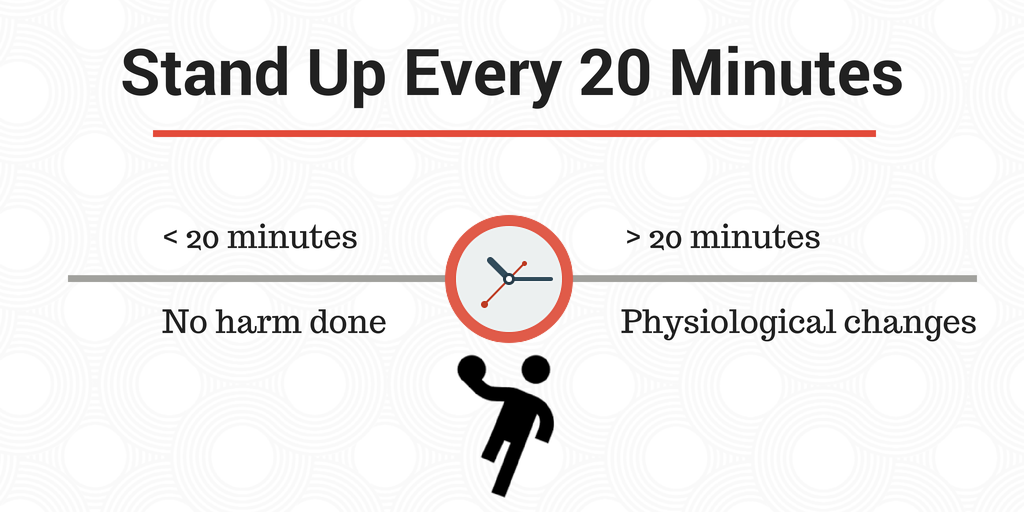
Gretchen Reynolds, a reporter on exercise research for The New York Times, wrote a book condensing health studies down to their most essential parts. One of the key takeaways from her research was this emphasis on standing up and the golden 20-minute mark.
New science shows very persuasively that standing up about every 20 minutes, even for only a minute or two, reduces your risks of developing diabetes and heart disease.
By standing up, you cause the big muscles in your legs and back to contract, which leads to an increase in certain enzymes that break up fat in the blood stream. You don’t have to jog in place or do jumping jacks. Just stand. A very pleasant additional benefit is that standing up every 20 to 30 minutes also seems to prompt the body to burn calories, so you don’t gain as much weight from sitting at the office most of the day.
If you can stand up every 20 minutes — even if you do nothing else — you change how your body responds physiologically.
Other studies confirm the benefit of this simple act of standing. For instance, a study of employees at New Balance shoe headquarters showed that performing an activity every 30 minutes—standing, walking, stretching—improved not only health but also engagement and concentration.
So now the question becomes: How do you stand up every 20 minutes?
Start small: Set a timer for 20 minutes
At Buffer, each person on the team is equipped with a Jawbone UP to track our movement, activity levels, and sleep. At the end of every day, we can see how we moved (or didn’t move). For instance, here’s my Thursday.
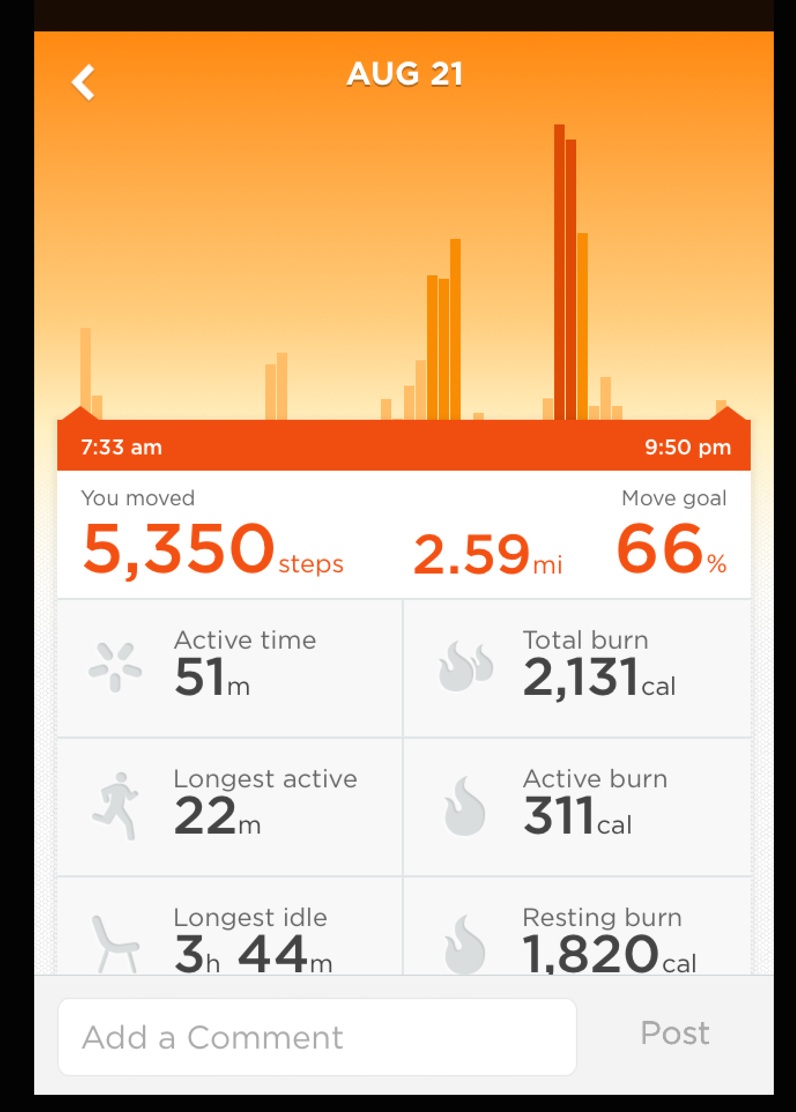
Those big, flat valleys are exactly the types of inactive stretches it’s best to avoid.
Solution: The UP band lets you set a move reminder that causes your wristband to buzz after a certain amount of inactivity. Bingo! Set it to 20 minutes, and stand up when it buzzes.
Other fitness bands offer similar functionality, too. And if you’d prefer to keep things super straightforward, you can go with a trusty phone or kitchen timer to set a manual notification for yourself.
Move to a new area: Workstation popcorn
One of our favorite work hacks on the Buffer team is workstation popcorn.
You start your day with a to-do list, then plan your list around different cafes, coffee shops, and workstations, popping from one to the next once you’ve completed a set of tasks.
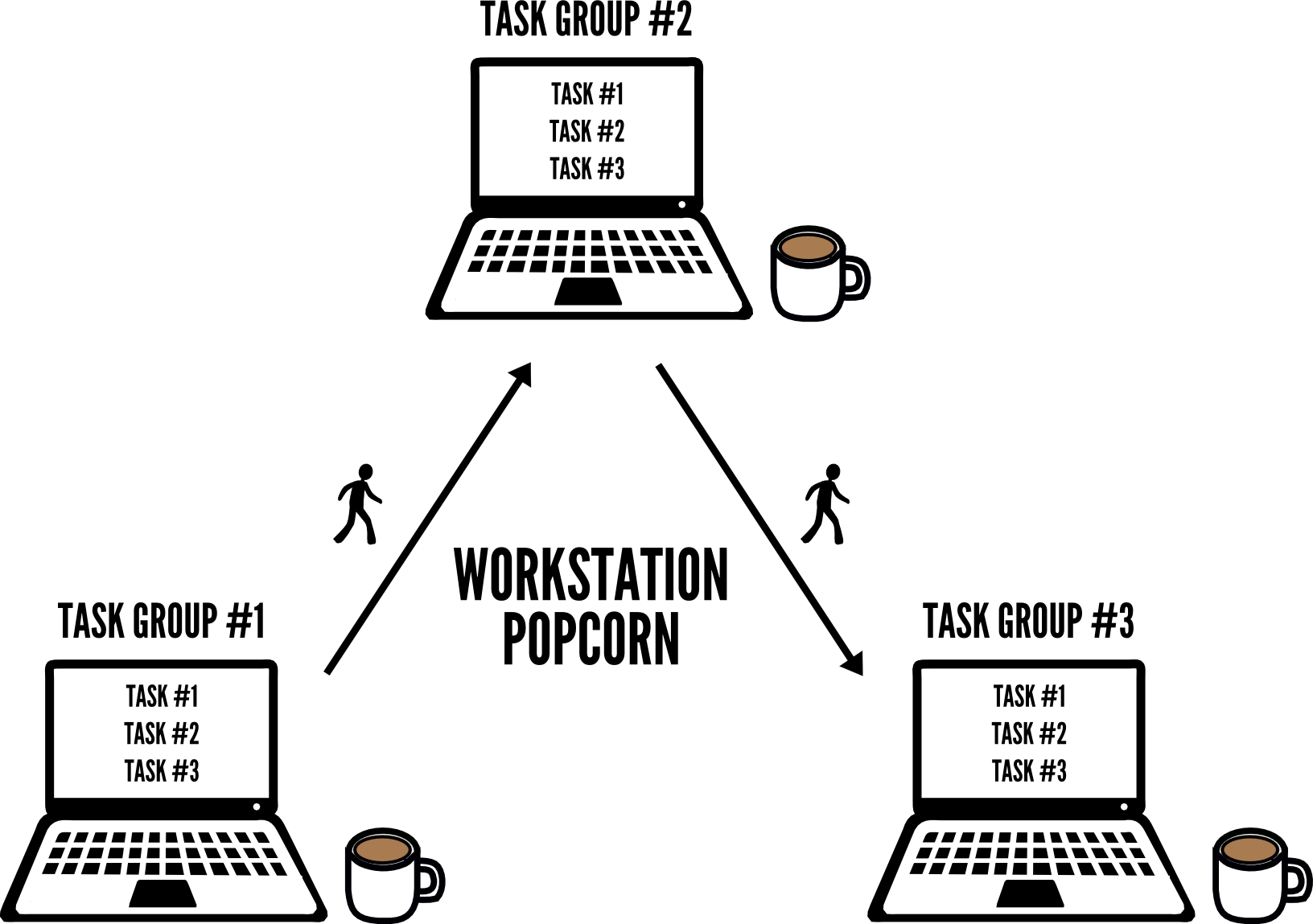
For instance, you might start the day at the office, spend the late morning at a coffee shop, hit a co-working space in the afternoon, and return to the office conference room to wrap up your day.
Walking in between each work place injects multiple opportunities for movement into your day. Though you won’t be popping from station to station every 20 minutes, you can supplement the 20-minute rule with these popcorn intervals, helping you achieve more consistent movement throughout the day.
Standing desk vs. Sitting: Focus on movement
One variation on the standing theme is that it’s not necessarily about standing up. It’s about moving.
The Cornell Ergonomics lab has the following advice:
Every 20 minutes stand for 2 minutes AND MOVE.
The absolute time isn’t critical but about every 20-30 minutes take a posture break and move for a couple of minutes. … Movement is important to get blood circulation through the muscles. And movement is FREE! Research shows that you don’t need to do vigorous exercise (e.g. jumping jacks) to get the benefits, just walking around is sufficient. So build in a pattern of creating greater movement variety in the workplace
In theory, moving can happen whether you’re standing or not. There are several chair options (see below) that allow for more movement than the traditional office chair. You can rock back and forth and lean side to side, and you’d be getting the muscle exercise you need via these simple movements.
The same goes for those who stand while working. Standing still for long stretches will eventually lead to its own set of health problems (undue pressure on joints, for instance), so you’re better off swaying, rocking, and stretching while you stand.
Stand while you work: How to find the right standing desk
Perhaps the most obvious (and increasingly popular) idea of how to stand and move more at work is to convert your workstation with a standing desk. If you’re curious to try this for yourself, all the best advice is to start small and cheap. And take things slow.
Small and cheap is the best way to start because you don’t want to pay big bucks for something you don’t like and therefore might not enjoy using. High-end standing desks can cost over $1,000. Therefore, it’s best to give a standing workstation a trial before you commit to a steep price tag.
First things first, posture is essential no matter what desk you use. Here’s a helpful graphic from Wired about the appropriate height, distances, and angles for a standing desk.
- Monitor should be 20-28 inches away from your eyes with the screen at a 20-degree tilt
- Table height should be at or slightly below elbow height
- Elbows at a 90-degree angle to the keyboard
- Eyes looking slightly down to the monitor
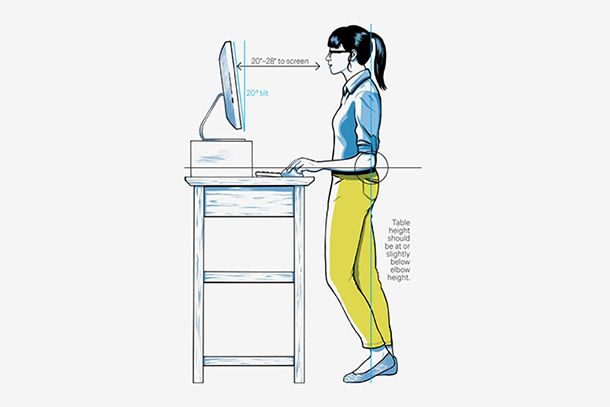
You’ll notice that this type of setup gets a little difficult with a laptop because the keyboard and screen would be on the same level. If you plan on a standing desk for your laptop, it might be best to invest in a standalone keyboard and mouse so that you can adjust your screen and peripherals to the ideal height.
As for the desk itself …
Start with a fixed-height standing desk
In the spirit of starting small, the fixed-height standing desk should come first. This can be as simple as spending a few days working from a kitchen counter or a coffee bar. Other folks have found creative ways of building a simple setup to try out.
Programmer Marco Arment built a Coke can stand for his monitor and keyboard.
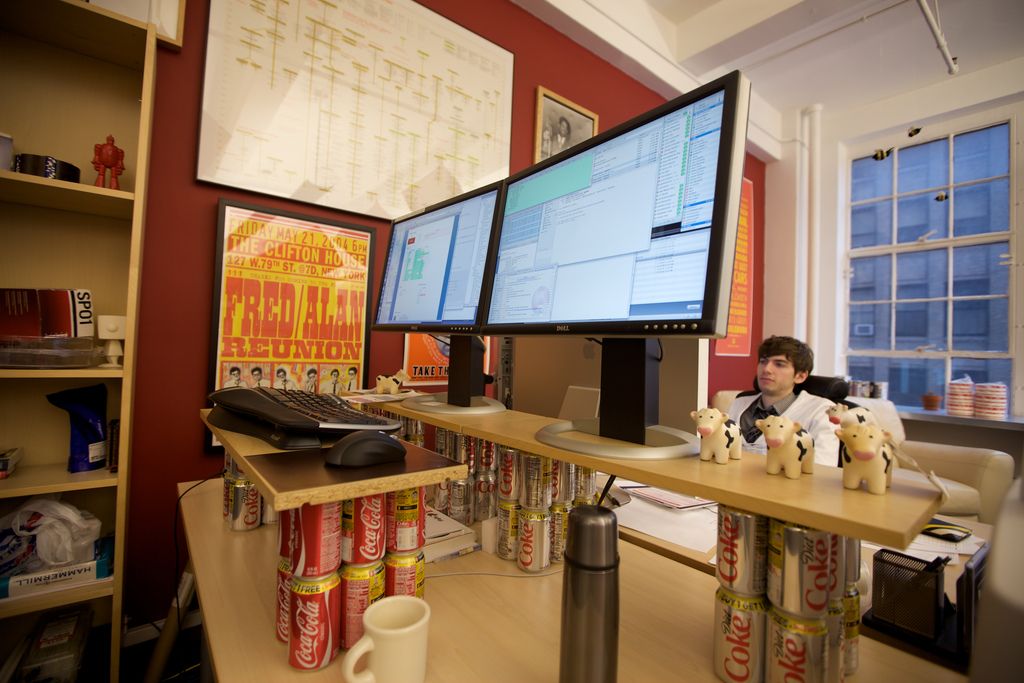
The $22 IKEA desk hack is the brainchild of Colin Nederkoom, CEO of Customer.io. With side tables, shelves, and brackets purchased at IKEA, Nederkoom put together a custom desk for his monitor and keyboard/mouse.
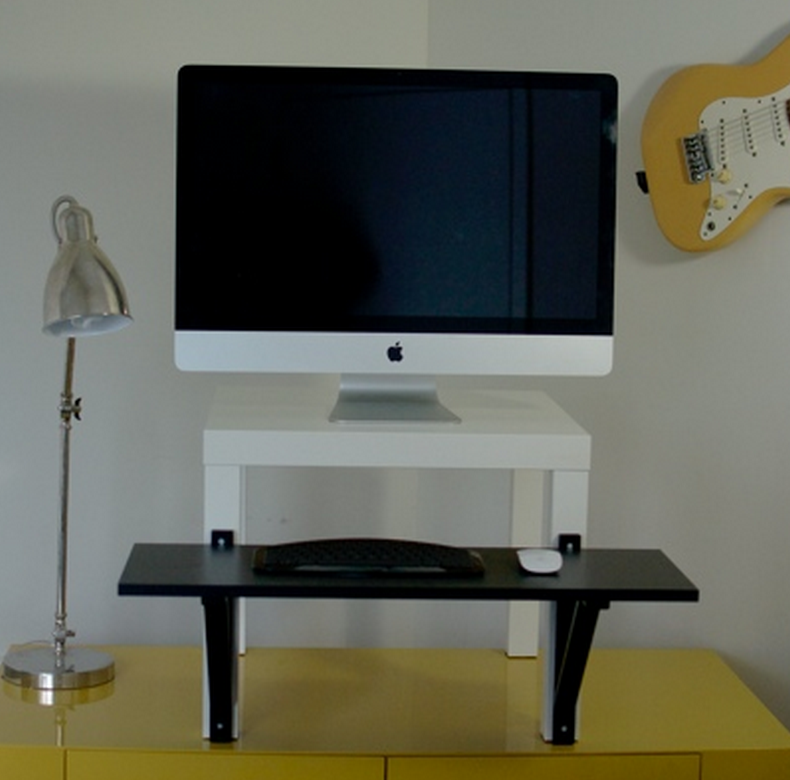
Move on to adjustable standing desks
Products like the Varidesk and Kangaroo Pro help convert a standard desk into a standing desk, and they have the adjustable power to set the screen and keyboard at the ideal height.
The advantages of an adjustable desk are likely to be noticed immediately: you can vary the height at which you work when sitting, standing, or moving in between. The hybrid options like the Varidesk and Kangaroo Pro help bridge the gap between non-adjustable desks and the full-on, standalone adjustable desks.
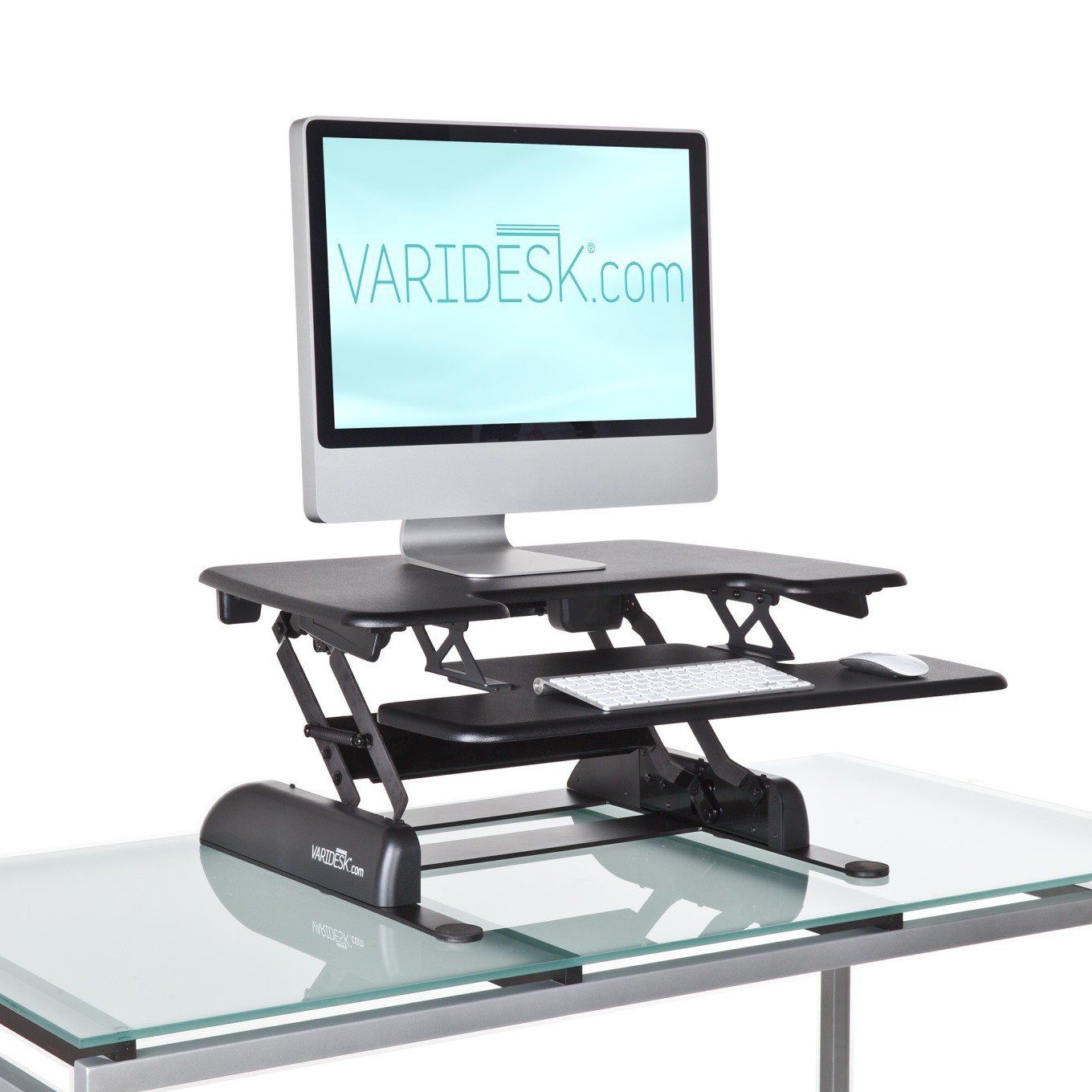
For the best standalone adjustable desks, I’ll cede the floor to the Wirecutter, which tested a number of desk options and found that the NextDesk Terra was the best standing desk on the market. Starting at more than $1,000, investments into these upper-end desks is not cheap. If you’d like a cheaper option, you might consider something more like Safco’s Muv Stand-up, which starts at $274.
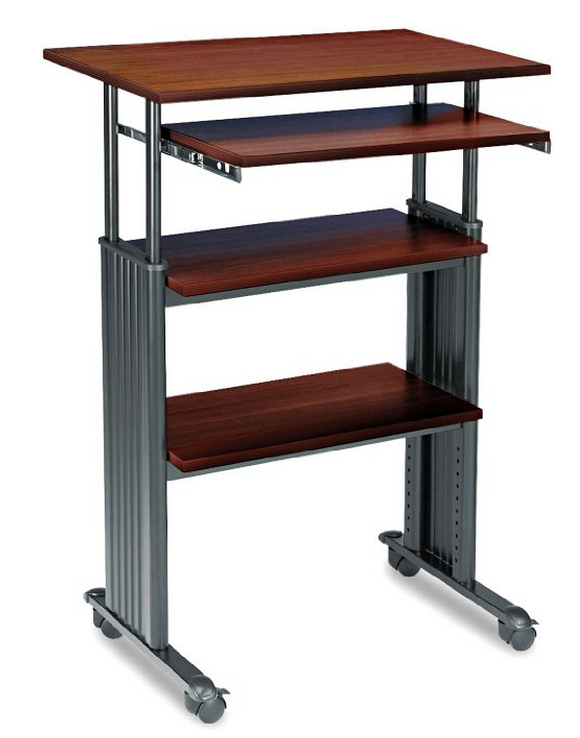
Move while you sit: Buy an active desk chair
Along with a standing desk, a supplement to moving more while you work is to find an active desk chair that supports constant movement and good posture. Even those who opt for standing at work find that it’s best not to stand all day; a 70:30 split of standing to sitting is often best.
The following chairs can help. These adjustable stools and seats can fit either workstyle—standing or sitting—and they support constant movement throughout the day by being just unstable enough to keep your muscles in motion.
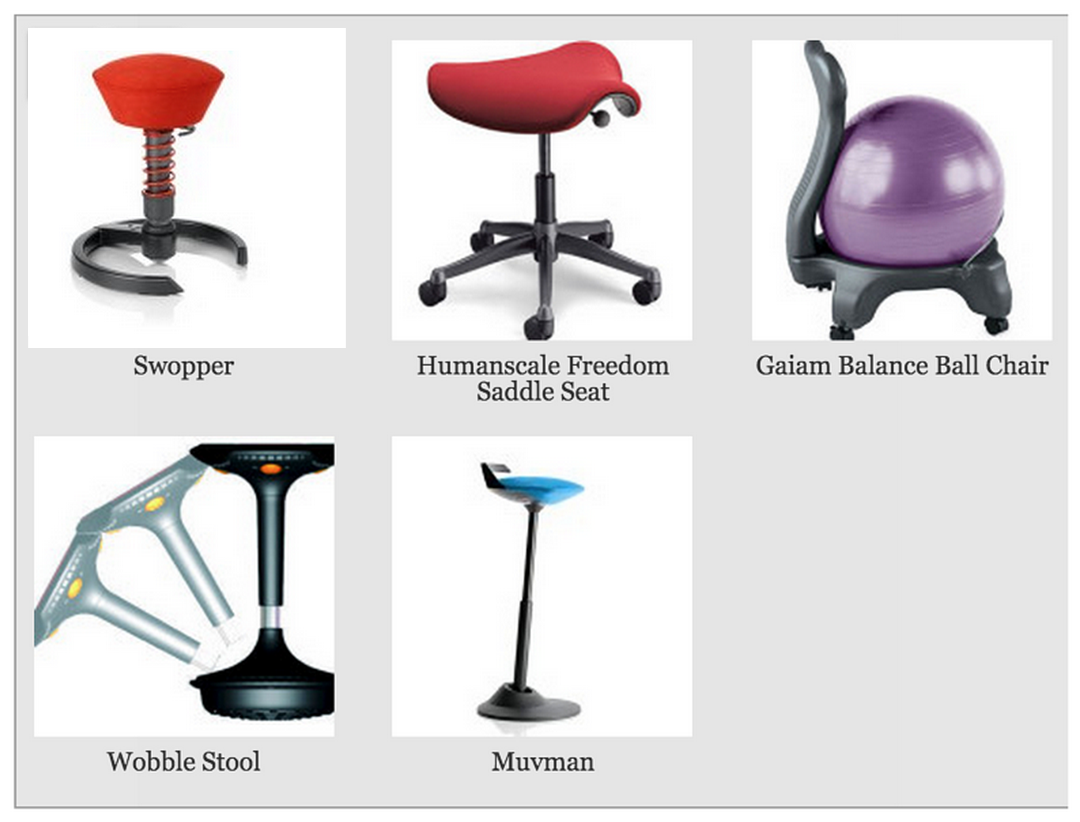
Active couch potatoes: How does daily exercise help?
In a study of marathoners, researchers found that participants trained an average of 40 miles per week, which is enough exercise to place them among the most active adults. At the same time, these runners sat idle for nearly 12 hours per day.
Hence the term “active couch potatoes.”
Interestingly, studies have shown that idle sitting (e.g. sedentary work) is an independent predictor of disease, meaning that daily exercise before or after work does not cancel out a day of sitting in front of the computer.
Of course, daily exercise can help in many other ways and an active couch potato is better off than a regular coach potato. Yet it would appear that a chunk of exercise is not enough to counteract the effects of a sedentary job. Consistent, regular movement is best.
Over to you
Which ways have you found to be more active during your work day?
Have you tried a standing desk or an active chair? What has been your experience with these options?
I’d be eager to hear your take in the comments!
Image credits: Death to the Stock Photo, Sebastian Langer, Yoga.com, Impossible HQ, sparklesidewalk
Try Buffer for free
190,000+ creators, small businesses, and marketers use Buffer to grow their audiences every month.



